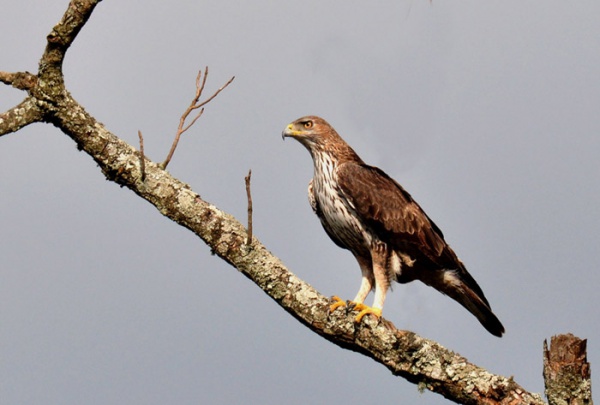Facts About Bonelli's eagle
Bonelli's eagle, named after the Italian ornithologist Franco Andrea Bonelli, is a majestic bird of prey often referred to as the crestless hawk-eagle. It belongs to the Accipitridae family and the Aquilinae subfamily. This species is found in various regions, including southern Europe, parts of Africa, the Indian Subcontinent, and as far east as southeastern China and Thailand. They generally inhabit hilly or mountainous areas with rocky outcrops.
Their primary diet includes rabbits, galliforms, and pigeons, although they can adapt to other prey if these are not available. Despite being listed as a species of Least Concern by the IUCN, Bonelli's eagles face several threats such as habitat destruction, electrocution, and persecution, leading to population declines, especially in Europe.
In terms of classification, Bonelli's eagle is part of the Aquilinae subfamily, which includes around 38 species. Initially grouped with the African hawk-eagle, it is now recognized as a separate species. Recent DNA studies have placed Bonelli's eagle in the genus Aquila, closely related to the golden eagle complex. There are two subspecies: the widely distributed A. f. fasciata and the smaller, isolated A. f. renschi found in the Lesser Sunda Islands.
Bonelli's eagle is medium-sized, measuring 55-74 cm in length with a wingspan of 143-180 cm. Females are larger than males. Their upperparts are dark brown, and their underside is white with streaks. Juveniles are lighter and have a more rufous hue. In flight, they are easily recognizable by their broad wings and long tail.
Their distribution is quite patchy, ranging from northwest Africa and parts of southern Europe to the Middle East and into Asia. They favor rocky, arid habitats near large bodies of water. In Europe, they are found in Portugal, Spain, southern France, and isolated areas in Italy, Greece, and Turkey. In Asia, they inhabit regions of the Indian Subcontinent, Myanmar, Thailand, and parts of China. While generally non-migratory, juveniles may disperse over long distances.
Bonelli's eagles are formidable hunters, often capturing prey from concealed perches or while soaring. They primarily hunt birds and mammals, especially rabbits and partridges, but their diet can vary widely based on local prey availability. Occasionally, they hunt in pairs, a behavior believed to strengthen pair bonds rather than improve hunting success. They rarely scavenge or steal food from other animals.
Breeding pairs are highly territorial and known for their spectacular aerial displays. They build large nests on cliffs or tall trees, often using the same nest for many years. Typically, they lay two eggs, with the female doing most of the incubation. The chicks fledge at around 56-65 days but remain dependent on their parents for several weeks. Juveniles disperse at about 142 days old, sometimes traveling hundreds of kilometers.
Despite efforts to conserve Bonelli's eagles, they face significant threats, particularly in Europe. Habitat destruction, persecution, and electrocution have led to population declines. Conservation measures such as insulating powerlines, protecting habitats, and providing supplemental feeding are in place, but the species remains at risk, especially in fringe areas where juvenile mortality is high. The future of Bonelli's eagle depends on ongoing and enhanced conservation efforts.

 Hungary
Hungary